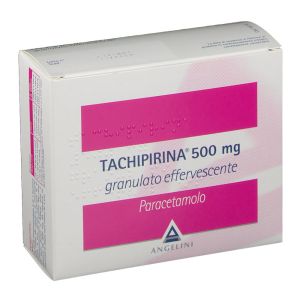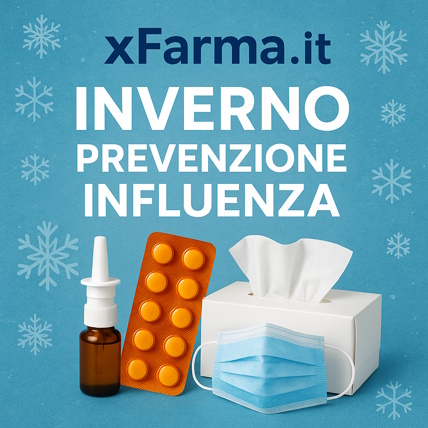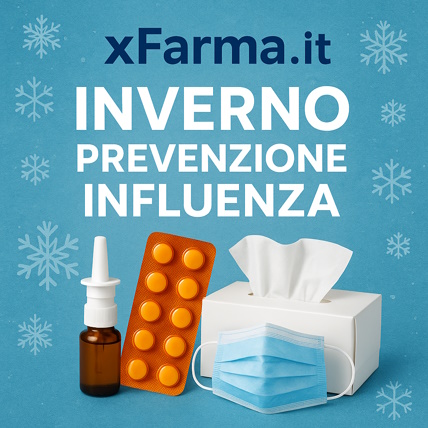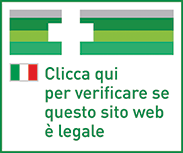Ship in Europe, Find out rates!
Language
Tachipirina Effervescent Granules 500mg Paracetamol 20 Sachets

Regular Price
€7.90
Special Price
€6.97
-12%
Save: €0.93
In stock
Recent lowest price:
€7.21
- box Delivery in Italy in 24/48 and free returns
- star3.000+ positive reviews
- dropboxOver 60,000 products in the catalog
NAME
TACHIPIRINA
PHARMACOTHERAPEUTIC CATEGORY
Analgesics and antipyretics, anilides.
ACTIVE PRINCIPLES
Paracetamol.
EXCIPIENTS
Tablets: microcrystalline cellulose, povidone, pregelatinised starch, stearic acid, croscarmellose sodium. Effervescent granules: maltitol, mannitol, sodium bicarbonate, anhydrous citric acid, citrus flavor, aspartame, docusate sodium. Suppositories: solid semisynthetic glycerides.
INDICATIONS
As antipyretic: symptomatic treatment of febrile diseases such as influenza, exanthematous diseases, acute respiratory tract diseases, etc. As an analgesic: headaches, neuralgia, myalgia and other painful manifestations of medium entity, of various origins.
CONTRAINDICATIONS / SECONDARY EFFECT
Hypersensitivity 'to paracetamol or to any of the listed excipients; patients with severe haemolytic anemia (this contraindication does not refer to the 500 mg oral formulations); severe hepatocellular insufficiency (this contraindication does not refer to oral formulations of 500 mg).
DOSAGE
For children it is essential to respect the dosage defined according to their body weight, and therefore to choose the suitable formulation. Approximate ages as a function of body weight are indicated by information title. In adults, the maximum oral dose is 3000 mg and rectally 4000 mg of paracetamol per day. Assess the need for treatments for more than 3 consecutive days. The dosage schedule of the drug in relation to body weight and the route of administration is as follows. >> 500 mg tablets. Children weighing between 21 and 25 kg (approximately between 6 and 10 years): half tablet at a time, to be repeated if necessary after 4 hours, without exceeding 6 doses per day (3 tablets). 40 kg (approximately between 8 and 13 years): 1 tablet at a time, to be repeated if necessary after 6 hours, without exceeding 4 doses per day. Children weighing between 41 and 50 kg (approximately between 12 and 15 years): 1 tablet at a time, to be repeated if necessary after 4 hours, without exceeding 6 doses per day. Children weighing more than 50 kg (approximately over 15 years): 1 tablet at a time, to be repeated if necessary after 4 hours, without exceeding 6 doses per day. Adults: 1 tablet at a time, to be repeated if necessary after 4 hours, without exceeding 6 doses per day. In case of severe pain or high fever, 2 tablets of 500 mg to be repeated if necessary after not less than 4 hours. >> 500 mg effervescent granules in sachets. Dissolve the effervescent granules in a glass of water. Children weighing between 26 and 40 kg (approximately between 8 and 13 years): 1 sachet at a time, to be repeated if necessary after 6 hours, without exceeding 4 doses per day. Boys weighed between 41 and 50 kg (approximately between 12 and 15 years): 1 sachet at a time, to be repeated if necessary after 4 hours, without exceeding 6 doses per day. Children weighing more than 50 kg (approximately over 15 years): 1 sachet at a time, to be repeated if necessary after 4 hours, without exceeding 6 doses per day. Adults: 1 sachet at a time, to be repeated if necessary after 4 hours, without exceeding 6 doses per day. In case of pain or high fever, 2 sachets of 500 mg to be repeated if necessary after not less than 4 hours. >> 125 mg effervescent granules in sachets. Dissolve the effervescent granules in a glass of water. Children weighing between 7 and 10 kg (approximately between 6 and 18 months): 1 sachet at a time, to be repeated if necessary after 6 hours, without exceeding 4 doses per day . Children weighing between 11 and 12 kg (approximately between 18 and 24 months): 1 sachet at a time, to be repeated if necessary after 4 hours, without exceeding 6 doses per day. Children weighing between 13 and 20 kg (approximately between 2 and 7 years): 2 sachets at a time (corresponding to 250 mg of paracetamol), to be repeated if necessary after 6 hours, without exceeding 4 doses per day. Children weighing between 21 and 25 kg (approximately between 6 and 10 years): 2 sachets at a time (corresponding to 250 mg of paracetamol), to be repeated if necessary after 4 hours, without exceeding 6 doses per day. >> Suppositories Infants 62.5 mg. Children weighing between 3.2 and 5 kg (approximately between birth and 3 months): 1 suppository at a time, to be repeated if necessary after 6 hours, without exceeding 4 doses per day. >> 125 mg Early Childhood Suppositories. Children weighing between 6 and 7 kg (approximately between 3 and 6 months): 1 suppository at a time, to be repeated if necessary after 6 hours, without exceeding 4 doses per day. Children weighing between 7 and 10 kg (approximately between 6 and 18 months): 1 suppository at a time, to be repeated if necessary after 4 - 6 hours, without exceeding 5 doses per day. Children weighing between 11 and 12 kg (approximately between 18 and 24 months): 1 suppository at a time, to be repeated if necessary after 4 hours, without exceeding 6 doses per day. >> Suppositories Children of 250 mg. Children weighing between 11 and 12 kg (approximately between 18 and 24 months): 1 suppository at a time, to be repeated if necessary after 8 hours, without exceeding 3 doses per day. Children weighing between 13 and 20 kg (approximately between 2 and 7 years): 1 suppository at a time, to be repeated if necessary after 6 hours, without exceeding 4 doses per day. >> Suppositories Children of 500 mg. Children weighing between 21 and 25 kg (approximately between 6 and 10 years): 1 suppository at a time, to be repeated if necessary after 8 hours, without exceeding 3 doses per day. Children weighing between 26 and 40 kg (approximately between 8 and 13 years): 1 suppository at a time, to be repeated if necessary after 6 hours, without exceeding 4 administrations per day. >> Adult suppositories of 1000 mg. Boys weighing between 41 and 50 kg (approximately between 12 and 15 years): 1 suppository at a time, to be repeated if necessary after 8 hours, without exceeding 3 doses per day. Children weighing more than 50 kg (approximately over 15 years): 1 suppository at a time, to be repeated if necessary after 6 hours, without exceeding 4 doses per day. Adults: 1 suppository at a time, to be repeated if necessary after 6 hours, without exceeding 4 doses per day. Renal insufficiency In case of severe renal insufficiency (creatinine clearance less than 10 ml / min), the interval between dosing should be at least 8 hours.
STORAGE
Effervescent tablets and granules: no special storage precautions. Suppositories: store at a temperature not exceeding 25 degrees C.
WARNINGS
In rare cases of allergic reactions, administration should be suspended and appropriate treatment instituted. Use with caution in case of chronic alcoholism, excessive alcohol intake (3 or more alcoholic drinks per day), anorexia, bulimia or cachexia, chronic malnutrition (low reserves of hepatic glutathione), dehydration, hypovolemia. Paracetamol should be administered with caution to patients with mild to moderate hepatocellular insufficiency (including Gilbert's syndrome), severe hepatic insufficiency (Child-Pugh> 9), acute hepatitis, concomitant treatment with drugs that impair liver function, deficiency of glucose-6-phosphate dehydrogenase, haemolytic anemia. High or prolonged doses of the product can cause alterations in the kidney and blood, even serious, therefore the administration in subjects with renal insufficiency must be carried out only if actually necessary and under direct medical supervision. In case of prolonged use it is advisable to monitor liver and kidney function and blood count. During treatment with paracetamol, before taking any other drug, check that it does not contain the same active ingredient, as if paracetamol is taken in high doses, serious adverse reactions may occur. . Effervescent granules 125 mg contains: aspartame, is a source of phenylalanine. It can be harmful in case of phenylketonuria (deficiency of the enzyme phenylalanine hydroxylase) due to the risk associated with the accumulation of the amino acid phenylalanine; maltitol: use with caution in patients with rare hereditary problems of fructose intolerance; 3.07 mmol sodium per sachet: to be taken into consideration in people with impaired renal function or on a low sodium diet. Effervescent granules contains 500mg: aspartame, is a source of phenylalanine. It can be harmful in case of phenylketonuria (deficiency of the enzyme phenylalanine hydroxylase) due to the risk linked to the accumulation of the amino acid phenylalanine; maltitol: use with caution in patients with rare hereditary problems of fructose intolerance. 12.3 mmol sodium per sachet: to be taken into consideration in people with impaired renal function or who follow a low sodium diet.
INTERACTIONS
Oral absorption of paracetamol depends on the rate of gastric emptying. Therefore, concomitant administration of drugs that slow down (e.g. anticholinergics, opioids) or increase (e.g. prokinetics) the rate of gastric emptying may result in a decrease or an increase in the bioavailability of the product, respectively. Concomitant administration of cholestyramine reduces the absorption of paracetamol. The simultaneous intake of paracetamol and chloramphenicol can 'induce an increase in the half-life of chloramphenicol, with the risk of elevating its toxicity'. The concomitant use of paracetamol (4 g per day for at least 4 days) with oral anticoagulants may induce slight variations in INR values. In these cases, more frequent monitoring of INR values should be performed during concomitant use and after Use with extreme caution and under strict control during chronic treatment with drugs that can determine the induction of hepatic monooxygenases or in case of exposure to substances that can have this effect (for example rifampicin, cimetidine, antiepileptics such as glutethimide, phenobarbital , carbamazepine). The same is true in cases of alcoholism and in patients treated with zidovudine. The administration of paracetamol can interfere with the determination of uric acid (by the method of phosphotungstic acid) and with that of blood sugar (by the method of glucose-oxidase-peroxidase).
SIDE EFFECTS
The following are the side effects of acetaminophen organized according to the MedDRA systemic and organic classification. There are insufficient data available to establish the frequency of the individual effects listed. Blood and lymphatic system disorders: thrombocytopenia, leukopenia, anemia, agranulocytosis. Immune system disorders: hypersensitivity reactions' (urticaria, laryngeal edema, angioedema, anaphylactic shock). Nervous system disorders: dizziness. Gastrointestinal disorders: gastrointestinal reaction. Hepatobiliary disorders: abnormal liver function, hepatitis. Skin and subcutaneous tissue disorders: erythema multiforme, Stevens Johnson syndrome, epidermal necrolysis, rash. Renal and urinary disorders: acute renal failure, interstitial nephritis, haematuria, anuria. Very rare cases of severe skin reactions have been reported. The reporting of suspected adverse reactions that occur after the authorization of the drug is important, as it allows continuous monitoring of the benefit / risk ratio of the drug.
PREGNANCY AND BREASTFEEDING
Although clinical studies in pregnant or lactating patients have not shown particular contraindications to the use of paracetamol nor caused undesirable effects affecting the mother or child, it is recommended to administer the product only in cases of actual necessity and under the direct control of the doctor.
TACHIPIRINA
PHARMACOTHERAPEUTIC CATEGORY
Analgesics and antipyretics, anilides.
ACTIVE PRINCIPLES
Paracetamol.
EXCIPIENTS
Tablets: microcrystalline cellulose, povidone, pregelatinised starch, stearic acid, croscarmellose sodium. Effervescent granules: maltitol, mannitol, sodium bicarbonate, anhydrous citric acid, citrus flavor, aspartame, docusate sodium. Suppositories: solid semisynthetic glycerides.
INDICATIONS
As antipyretic: symptomatic treatment of febrile diseases such as influenza, exanthematous diseases, acute respiratory tract diseases, etc. As an analgesic: headaches, neuralgia, myalgia and other painful manifestations of medium entity, of various origins.
CONTRAINDICATIONS / SECONDARY EFFECT
Hypersensitivity 'to paracetamol or to any of the listed excipients; patients with severe haemolytic anemia (this contraindication does not refer to the 500 mg oral formulations); severe hepatocellular insufficiency (this contraindication does not refer to oral formulations of 500 mg).
DOSAGE
For children it is essential to respect the dosage defined according to their body weight, and therefore to choose the suitable formulation. Approximate ages as a function of body weight are indicated by information title. In adults, the maximum oral dose is 3000 mg and rectally 4000 mg of paracetamol per day. Assess the need for treatments for more than 3 consecutive days. The dosage schedule of the drug in relation to body weight and the route of administration is as follows. >> 500 mg tablets. Children weighing between 21 and 25 kg (approximately between 6 and 10 years): half tablet at a time, to be repeated if necessary after 4 hours, without exceeding 6 doses per day (3 tablets). 40 kg (approximately between 8 and 13 years): 1 tablet at a time, to be repeated if necessary after 6 hours, without exceeding 4 doses per day. Children weighing between 41 and 50 kg (approximately between 12 and 15 years): 1 tablet at a time, to be repeated if necessary after 4 hours, without exceeding 6 doses per day. Children weighing more than 50 kg (approximately over 15 years): 1 tablet at a time, to be repeated if necessary after 4 hours, without exceeding 6 doses per day. Adults: 1 tablet at a time, to be repeated if necessary after 4 hours, without exceeding 6 doses per day. In case of severe pain or high fever, 2 tablets of 500 mg to be repeated if necessary after not less than 4 hours. >> 500 mg effervescent granules in sachets. Dissolve the effervescent granules in a glass of water. Children weighing between 26 and 40 kg (approximately between 8 and 13 years): 1 sachet at a time, to be repeated if necessary after 6 hours, without exceeding 4 doses per day. Boys weighed between 41 and 50 kg (approximately between 12 and 15 years): 1 sachet at a time, to be repeated if necessary after 4 hours, without exceeding 6 doses per day. Children weighing more than 50 kg (approximately over 15 years): 1 sachet at a time, to be repeated if necessary after 4 hours, without exceeding 6 doses per day. Adults: 1 sachet at a time, to be repeated if necessary after 4 hours, without exceeding 6 doses per day. In case of pain or high fever, 2 sachets of 500 mg to be repeated if necessary after not less than 4 hours. >> 125 mg effervescent granules in sachets. Dissolve the effervescent granules in a glass of water. Children weighing between 7 and 10 kg (approximately between 6 and 18 months): 1 sachet at a time, to be repeated if necessary after 6 hours, without exceeding 4 doses per day . Children weighing between 11 and 12 kg (approximately between 18 and 24 months): 1 sachet at a time, to be repeated if necessary after 4 hours, without exceeding 6 doses per day. Children weighing between 13 and 20 kg (approximately between 2 and 7 years): 2 sachets at a time (corresponding to 250 mg of paracetamol), to be repeated if necessary after 6 hours, without exceeding 4 doses per day. Children weighing between 21 and 25 kg (approximately between 6 and 10 years): 2 sachets at a time (corresponding to 250 mg of paracetamol), to be repeated if necessary after 4 hours, without exceeding 6 doses per day. >> Suppositories Infants 62.5 mg. Children weighing between 3.2 and 5 kg (approximately between birth and 3 months): 1 suppository at a time, to be repeated if necessary after 6 hours, without exceeding 4 doses per day. >> 125 mg Early Childhood Suppositories. Children weighing between 6 and 7 kg (approximately between 3 and 6 months): 1 suppository at a time, to be repeated if necessary after 6 hours, without exceeding 4 doses per day. Children weighing between 7 and 10 kg (approximately between 6 and 18 months): 1 suppository at a time, to be repeated if necessary after 4 - 6 hours, without exceeding 5 doses per day. Children weighing between 11 and 12 kg (approximately between 18 and 24 months): 1 suppository at a time, to be repeated if necessary after 4 hours, without exceeding 6 doses per day. >> Suppositories Children of 250 mg. Children weighing between 11 and 12 kg (approximately between 18 and 24 months): 1 suppository at a time, to be repeated if necessary after 8 hours, without exceeding 3 doses per day. Children weighing between 13 and 20 kg (approximately between 2 and 7 years): 1 suppository at a time, to be repeated if necessary after 6 hours, without exceeding 4 doses per day. >> Suppositories Children of 500 mg. Children weighing between 21 and 25 kg (approximately between 6 and 10 years): 1 suppository at a time, to be repeated if necessary after 8 hours, without exceeding 3 doses per day. Children weighing between 26 and 40 kg (approximately between 8 and 13 years): 1 suppository at a time, to be repeated if necessary after 6 hours, without exceeding 4 administrations per day. >> Adult suppositories of 1000 mg. Boys weighing between 41 and 50 kg (approximately between 12 and 15 years): 1 suppository at a time, to be repeated if necessary after 8 hours, without exceeding 3 doses per day. Children weighing more than 50 kg (approximately over 15 years): 1 suppository at a time, to be repeated if necessary after 6 hours, without exceeding 4 doses per day. Adults: 1 suppository at a time, to be repeated if necessary after 6 hours, without exceeding 4 doses per day. Renal insufficiency In case of severe renal insufficiency (creatinine clearance less than 10 ml / min), the interval between dosing should be at least 8 hours.
STORAGE
Effervescent tablets and granules: no special storage precautions. Suppositories: store at a temperature not exceeding 25 degrees C.
WARNINGS
In rare cases of allergic reactions, administration should be suspended and appropriate treatment instituted. Use with caution in case of chronic alcoholism, excessive alcohol intake (3 or more alcoholic drinks per day), anorexia, bulimia or cachexia, chronic malnutrition (low reserves of hepatic glutathione), dehydration, hypovolemia. Paracetamol should be administered with caution to patients with mild to moderate hepatocellular insufficiency (including Gilbert's syndrome), severe hepatic insufficiency (Child-Pugh> 9), acute hepatitis, concomitant treatment with drugs that impair liver function, deficiency of glucose-6-phosphate dehydrogenase, haemolytic anemia. High or prolonged doses of the product can cause alterations in the kidney and blood, even serious, therefore the administration in subjects with renal insufficiency must be carried out only if actually necessary and under direct medical supervision. In case of prolonged use it is advisable to monitor liver and kidney function and blood count. During treatment with paracetamol, before taking any other drug, check that it does not contain the same active ingredient, as if paracetamol is taken in high doses, serious adverse reactions may occur. . Effervescent granules 125 mg contains: aspartame, is a source of phenylalanine. It can be harmful in case of phenylketonuria (deficiency of the enzyme phenylalanine hydroxylase) due to the risk associated with the accumulation of the amino acid phenylalanine; maltitol: use with caution in patients with rare hereditary problems of fructose intolerance; 3.07 mmol sodium per sachet: to be taken into consideration in people with impaired renal function or on a low sodium diet. Effervescent granules contains 500mg: aspartame, is a source of phenylalanine. It can be harmful in case of phenylketonuria (deficiency of the enzyme phenylalanine hydroxylase) due to the risk linked to the accumulation of the amino acid phenylalanine; maltitol: use with caution in patients with rare hereditary problems of fructose intolerance. 12.3 mmol sodium per sachet: to be taken into consideration in people with impaired renal function or who follow a low sodium diet.
INTERACTIONS
Oral absorption of paracetamol depends on the rate of gastric emptying. Therefore, concomitant administration of drugs that slow down (e.g. anticholinergics, opioids) or increase (e.g. prokinetics) the rate of gastric emptying may result in a decrease or an increase in the bioavailability of the product, respectively. Concomitant administration of cholestyramine reduces the absorption of paracetamol. The simultaneous intake of paracetamol and chloramphenicol can 'induce an increase in the half-life of chloramphenicol, with the risk of elevating its toxicity'. The concomitant use of paracetamol (4 g per day for at least 4 days) with oral anticoagulants may induce slight variations in INR values. In these cases, more frequent monitoring of INR values should be performed during concomitant use and after Use with extreme caution and under strict control during chronic treatment with drugs that can determine the induction of hepatic monooxygenases or in case of exposure to substances that can have this effect (for example rifampicin, cimetidine, antiepileptics such as glutethimide, phenobarbital , carbamazepine). The same is true in cases of alcoholism and in patients treated with zidovudine. The administration of paracetamol can interfere with the determination of uric acid (by the method of phosphotungstic acid) and with that of blood sugar (by the method of glucose-oxidase-peroxidase).
SIDE EFFECTS
The following are the side effects of acetaminophen organized according to the MedDRA systemic and organic classification. There are insufficient data available to establish the frequency of the individual effects listed. Blood and lymphatic system disorders: thrombocytopenia, leukopenia, anemia, agranulocytosis. Immune system disorders: hypersensitivity reactions' (urticaria, laryngeal edema, angioedema, anaphylactic shock). Nervous system disorders: dizziness. Gastrointestinal disorders: gastrointestinal reaction. Hepatobiliary disorders: abnormal liver function, hepatitis. Skin and subcutaneous tissue disorders: erythema multiforme, Stevens Johnson syndrome, epidermal necrolysis, rash. Renal and urinary disorders: acute renal failure, interstitial nephritis, haematuria, anuria. Very rare cases of severe skin reactions have been reported. The reporting of suspected adverse reactions that occur after the authorization of the drug is important, as it allows continuous monitoring of the benefit / risk ratio of the drug.
PREGNANCY AND BREASTFEEDING
Although clinical studies in pregnant or lactating patients have not shown particular contraindications to the use of paracetamol nor caused undesirable effects affecting the mother or child, it is recommended to administer the product only in cases of actual necessity and under the direct control of the doctor.
| Destination | Cost | Detail |
|---|---|---|
| Italy | €5,90* | 24/72H |
| Austria, France, Germany, Slovenia | € 13* | 3 days |
| Belgium, Luxembourg, Portugal, Netherlands, Spain | € 14* | 4 days |
| Bulgary, Cechia, Hungary, Poland, Romania, Slovakia | € 19* | 5 days |
| Denmark, Estonia, Finland, Ireland, Lithuania, Latvia ,Sweden | € 22* | 5 days |
| United Kingdom, Switzerland, Greece, Malta/td> | € 30* | 7 days |
| Canada | € 40 | 7 Days |
European shipments with express courier: FedEx, MBE, DHL
*For the shipment outside band B ther's an extra cost of 22€ *For the shipment outside band C ther's an extra cost of 30€ Delivery Times exclude Saturday and Holidays
For Islands and Areas of difficult Accessibility the shipments are made in 72 hours and the cost will be increased by 15€
The images of the products shown on our site are purely indicative and may differ in shape, color, text and packaging shown on them. Given the difficulty of updating all the products on our site in real time or any errors, XFarma.it, all products will be identified through SKU MINSAN (code of the Ministry of Health).


